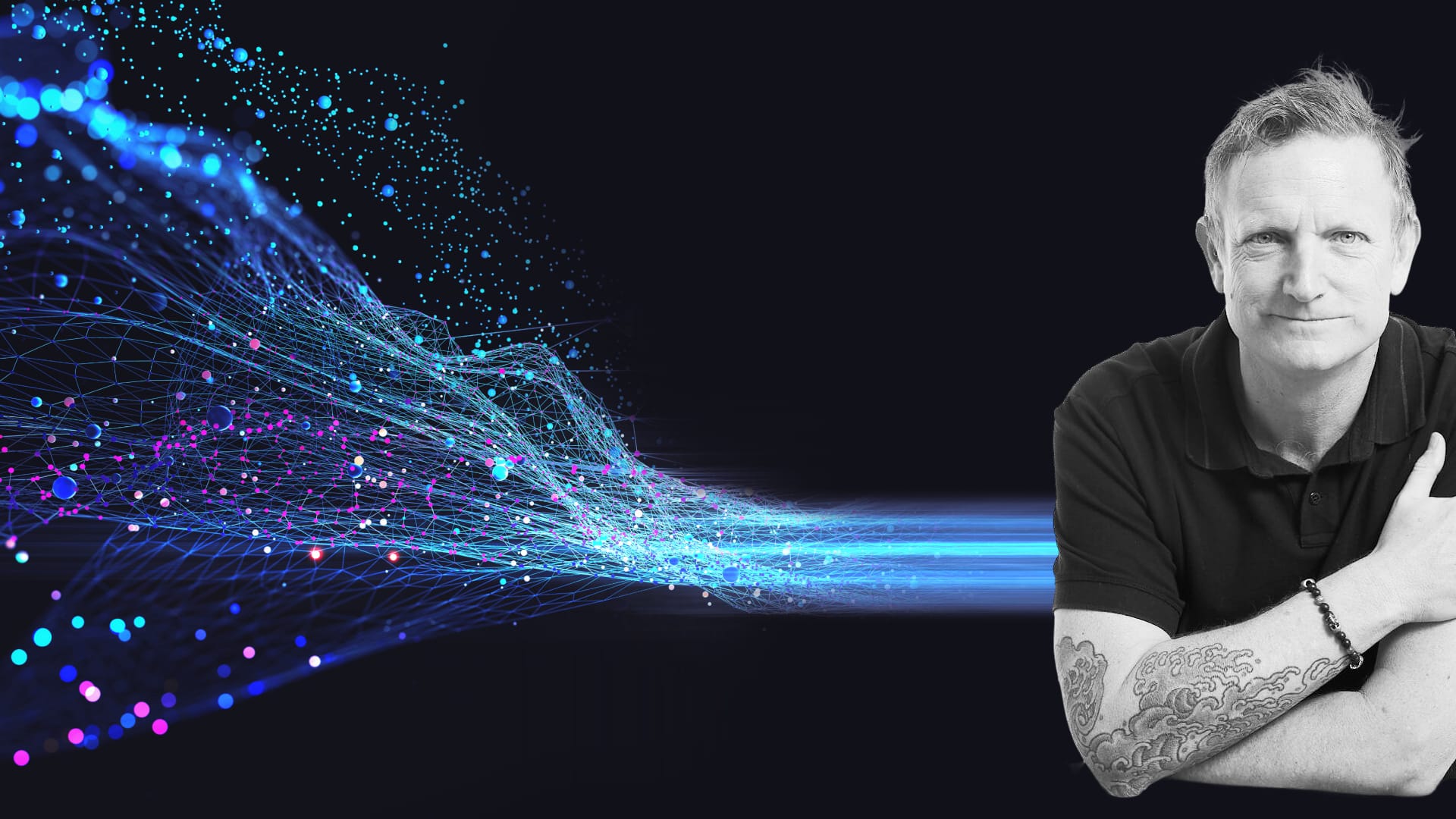In addition to navigating these troubled waters, platforms are becoming more data-shackled, as governments are raising their brows when it comes to how and what user information is being aggregated. As a result, platforms are updating rules and regulations across the board.
Strategists are now forced to consider new approaches while continuing to develop salient plans without the luxury of obtaining the same type of data to help inform those strategies. If that’s not enough, channel demographics are shifting like never before. Content consumption has increased exponentially, and the ways people use platforms have shifted.
While volatility is at an all-time-high, there have been positive developments like the removal of Facebook’s 20% text rule (yes, creatives can now rejoice), emergent platforms are coming out of the woodwork, and the undeniable and overwhelming desire for social media is universal.
Considering the climate, we highlighted the top trends that we’re bound to see and also leverage as we head into 2021 and beyond:
- Video and live streaming
Many brands are seeing that video continues to reign supreme in terms of engagement. With short attention spans, especially among younger demographics, it is no surprise that video outperforms most content-types. According to Cisco, 82% of all online content will be video content. In addition, live video will also continue to grow across brand pages into 2022.
In 2019 alone, internet users watched 1.1 billion hours of live video. And while this figure was already sure to explode, the global crisis has only added more fuel to the fire, with live video becoming the prime method to communicate for many industries.
- Ephemeral content
Short-term formats like “stories” aren’t going anywhere. In fact, these formats are not only available on Instagram, Facebook and WhatsApp, similar features have been sprouting up on other platforms like YouTube, LinkedIn and Twitter, with others in the pipeline. According to Hootsuite, 64% of marketers either have already incorporated Instagram Stories into their strategies or plan to.
It’s evident that users enjoy the idea of not feeling tied to content in perpetuity, particularly in-feed content, and posts that have a shorter shelf-life are more compelling since they’re fleeting. The beauty of it all is if content is worth keeping, it can be saved or pinned, where available.
- Virtual Events
Although this method became a necessity in 2020, virtual events will continue to be more accessible and frequent to communicators and users alike. For example, LinkedIn now enables free lead capture for events on the platform. You can either host an event on LinkedIn Live or point individuals to another virtual event platform. In addition, virtual events will provide fertile ground for more opportunities in advertising and beyond.
- Influencer Marketing
Influencers aren’t going anywhere. If anything, they have evolved with the times. Brands realize that it’s more cost-effective to utilize micro and nano influencers and still receive high return on investment. Although most influencers are found and used on social, brands are now leveraging content generated by influencers on websites, online stores, newsletters and other channels.
- Social Commerce
With almost half the world’s population now using social media, it’s expected that the next step would focus on online shopping. According to Envato, 71% of consumers turn to social media for shopping inspiration, with 55% of online shoppers now making the majority of their purchases through social media channels.
With research showing that customers are more likely to buy when presented with a streamlined shopping experience, social media platforms will continue to develop more e-commerce tools to promote social selling.
- Branded Content
While user-generated content is still considered a valuable tactic, high-quality branded content is predicted to soar in 2021. Although most branded content would typically be created for promotions, it’s now more significant to create a unique experience for consumers.
With the quality and quantity of marketing content on the rise, strategists are exploring how to gamify online experiences to keep users engaged.
- Personalized Marketing
Customers will continue to demand more from brands, favoring companies that offer better experiences at multiple touchpoints. For example, online and SMS messaging between customers and brands will grow.
Businesses and marketers are leveraging this trend in the delivery of social media ads as platforms now offer advanced targeting and customization options. This method has reached such new heights that, now, platforms are able to understand the type of products a person likes. With that data, they can serve ads for similar products from various brands.
- Authenticity and Accountability
Authenticity and accountability are two buzzwords marketers have been leaning on heavily in 2020.Now, consumers expect more from brands. They want openness, inclusivity and honesty. They want their brands to take a stand, and they invest in companies that mirror their values. Eighty-six percent of consumers say authenticity is important when deciding the brands they like and support.
All in all, it’s more noteworthy to tell consumers an honest story instead of advertising to them, which creates more trust and appreciation for their company.
Moral of the Story
It’s clear that social media will continue to be unpredictable. More individuals realize the impact social media brings to the table, and platforms are responding to that in a big way.
Platforms will continue to update and attempt to squash the competition. Platforms must be nimble to keep up with users, so marketers will always need to be ahead of the game and be ready to roll.
The Latest
We study the game as hard as we play it.
Learn with us what’s now and next.
Related Stories
What if your team could build a custom, competitor price-tracking dashboard in two hours. Or create a tool that automatically formats your weekly reports exactly the way the CMO or CRO likes them, without sending a single Jira ticket?
These aren’t hypothetical scenarios. They’re real business challenges that many teams can start solving today with micro tools: small purpose-built utilities created with AI. The biggest advantage? Anyone on your team can build these tools, coded by AI, with little to no technical chops required.
The Economics of Software Have Changed
For decades, software development has operated on a simple principle: economies of scale. Companies concentrate talent and capital to build tools that benefit the broadest possible market. They need thousands, if not millions, of users to justify the investment in systems design, coding, infrastructure, and security.
This model created a clear hierarchy of problems worth solving. Enterprise-wide challenges? Worth it. Department-level inefficiencies? Maybe. Individual workflow friction? Not economically viable.
But AI coding agents – “vibe coding” tools, as they’ve been called – are changing the math. Tools like Anthropic’s Claude, Google’s AI Studio and OpenAI’s Codex are getting good enough that building a custom solution may now be faster and cheaper than working around the absence of one. For the first time, we can afford to solve problems that exist outside traditional economies of scale. That’s what makes micro tools interesting. They’re not revolutionary. They’re economically rational.
Mod Op’s Innovation Team builds micro-tools regularly. One micro-sized example: our PR team needed a way to make it easy for staff across the agency to share earned media coverage and other thought leadership on social media with proper tracking and on-brand messaging. In less than a day, we built a web app that generates post templates with pre-written commentary and automated UTM tracking, solving a workflow problem that would never have made it onto a traditional development roadmap. We’ve used the same approach to build internal-facing Mod Agents and increasingly, client-facing teams are building rapid “pretotype” agents and integrations on our Nexus AI platform.
What Makes a Problem “Micro Scale”?
Micro tools are purpose-built software solutions designed to solve specific workflow problems for small audiences, sometimes even just one person. They address the inefficiencies that have lingered in organizations for years simply because they weren’t big enough to justify traditional development costs.
Every organization has dozens of these problems. Individually, they feel like minor day-to-day friction. Collectively, they could represent a significant amount of time every week. The reason these problems have gone unsolved isn’t technical difficulty. Traditional software development just has too much overhead to justify solving narrow problems: requirements gathering, stakeholder alignment, development cycles, QA, maintenance. The fixed costs are too high relative to the benefit.
But when AI can handle much of that overhead, the economics flip. Suddenly, spending a handful of hours with a coding agent whipping up a tool that saves two people three hours a week becomes worth solving. That is micro scale.
How to Start Building Micro Tools
If you’re doing the work day-to-day, you’re best positioned to identify what’s worth fixing. Here’s how to start thinking at micro scale.
- Shift from Tactical Execution to Strategic Thinking. Most marketing roles are defined by execution: run the campaign, build the deck, send the report. But as AI tools become more capable, the value shifts toward people who can identify which problems are worth solving and how to solve them efficiently. This doesn’t mean abandoning execution. It means thinking critically about the work itself. Why does this process exist? What’s the actual goal? Is there a faster way? Teams that develop this habit will spot opportunities others miss.
- Look for Problems Too Small for Engineering. You’re mining territory that traditional software development ignores. Challenges so specific, so narrow, or so boring that they’ve never justified formal development. Start with one well-defined problem that affects you personally. Build something simple. Use it. If it saves you time, that’s success. If it covers a use case that your teammates could benefit from too, share it. That’s multiplying its impact. Just don’t get too attached because micro tools should be replaced when something better is introduced.
- Build Where You Work. The best place to start is right in your existing workflow. Think about browser extensions, app plugins, API connections that let you embed and integrate into tools you already use to minimize context switching. If you’re already working in Figma or your CRM or your browser, that’s where your tool should live.
- Your Domain Knowledge Is Your Advantage. You don’t need to be an AI expert, but you do need to understand your work well enough to articulate what’s broken and what better looks like. You know which data sources are trustworthy. You know which edge cases matter. You know what “good enough” means in your context.
How to Enable Micro Scale Innovation
If you manage a team, your job is to create the conditions where micro scale thinking thrives. Here’s what that looks like in practice.
Create Space for Micro Scale Innovation. Budget time for people to solve their own workflow problems, even if those problems don’t map to team OKRs or affect anyone else. The economics work when someone saves themselves meaningful time – three hours per week is 150 hours per year. That’s worth celebrating for one person, and potentially scalable to others later. Make this explicit. In 1-on-1s, ask: “What’s one thing you do regularly that feels like unnecessary work?” Document the answers. You’re building a catalog of micro scale opportunities.
Set Boundaries That Enable Speed. The economics of micro tools only work if they skip the overhead of traditional development. That means being clear about what requires stakeholder approval and what doesn’t. A tool that solves one person’s workflow problem and touches no sensitive data? Let them build it. A tool that becomes mission-critical or handles customer information? That needs proper governance. Help your team understand where the boundaries are so they don’t wait for permission they don’t need.
Establish a Partnership with IT Early. Proactively align with your IT department to create a secure sandbox for innovation. Frame the conversation as: “My team wants to experiment with micro tools to improve their workflows. What are the guardrails we need to work within?” Most organizations already have lists of approved AI tools – like Mod Op’s AI Playground – that employees can use to understand what they can work with. When your team understands your company’s security, governance and compliance needs, they can work fast and smart within those limitations.
What to Watch Out For
The same speed that makes micro tools attractive can create hidden costs. AI-generated code solves the immediate problem you describe but often misses edge cases, error handling, and long-term maintainability. A tool that works perfectly for you today might break silently when an API changes or when it encounters unexpected inputs. That’s manageable when only you depend on it. It becomes a major blocker when others have reorganized their workflows around it.
Build assuming the tool will be replaced in three months. Document as you go: what problem it solves, what data it touches, what happens if it breaks. Don’t build when an existing solution is “close enough” or when the risk of failure is high. The maintenance burden – fixing bugs, updating integrations, answering questions – can easily consume an hour per month indefinitely. Factor that into your initial calculation.
Most importantly, watch for the transition from personal productivity hack to mission-critical dependency. When something becomes essential for multiple people, it needs proper documentation, maintenance plans, and potentially engineering support. A tool serving one person that breaks is an inconvenience. A tool serving twenty people that breaks is a crisis. Help your team recognize when to build, when to stop, and when to hand something off to scale it properly.
What to Do This Quarter
With these foundations in place, it’s time to move from theory to action. Translating micro tool concepts into tangible marketing advantages requires deliberate experimentation and clear ownership:
If you’re an individual contributor: Pick one task that takes you 30+ minutes per week and feels repetitive. Spend a few hours exploring whether AI tools could help you solve it. You’re not trying to build production software, you’re testing if the economics work for you personally.
If you’re a team lead: Run a pilot. Pick an interested team member and one specific problem. Give them two weeks, remove barriers, and share the results, whether it works or not. The learning compounds either way.
Where We’re Headed from Here
The ability to solve your own workflow problems won’t be a differentiator much longer, it will be a baseline expectation. The teams that start now won’t just build better tools; they’ll build the muscle to identify which problems are worth solving in the first place. That’s the real advantage: not the tools themselves, but a culture of strategic thinking and self-direction.
The Latest
We study the game as hard as we play it.
Learn with us what’s now and next.
Related Stories
In nearly every marketing strategy conversation, in nearly every organization, the same tension keeps surfacing: marketers are challenged to do more with less but show greater impact.
It’s a challenge, yes. But it’s also an opportunity.
We’re at a moment of reckoning in enterprise B2B marketing, especially. Not because the fundamentals have changed, but because the gap between those who get it and those who don’t is widening fast.
Here’s what’s fascinating: the companies actually pulling this off aren’t working harder, and they don’t have bigger budgets or flashier campaigns. Those who excel have figured out how to make their entire marketing ecosystem work as one cohesive machine, systematically.
While others struggle with fragmented data, siloed teams, and reluctance to invest in tech and AI, winning B2B leaders are building something different: marketing strategy and operations that compound.
The Orchestra Effect: When Teams Move as One
Enterprise B2B strategy is inherently complex, with brand and product teams, sales teams, marketing teams, partner channels, agencies, tech, contractors, distributors, retailers, buying committees… oh, and multiple audiences as a layer beyond that.
The single largest challenge is making sure all those players are educated, empowered, and aligned while navigating long, multi-touch sales cycles. Success follows when teams operate like an orchestra. Distinct, synchronized, and harmonious.
The magic happens when these moving parts start working together instead of against each other. Winners turn chaos into choreography through alignment to overall business goals, shared data models, unified messaging and audience journeys, and measurement frameworks that track real business impact, not team or marketing metrics alone.
The path to get there doesn’t happen overnight. It requires leadership that unites siloed teams around shared business goals. Each team still has individual metrics that matter, but no team can be more important than another, and all metrics must ladder up to company results.
Each piece of the machine depends on the others. It’s when marketing content advances sales conversations and increases product adoption and company revenue. It’s when a customer’s experience feels seamless whether they’ve seen an ad, talked with sales, or evaluated the product. The audience experience is the through-line important to all.
The Ultimate Force Multiplier
To drive internal unity and external consistency requires not only people, but orchestrated technology and AI. The counterintuitive truth about modern marketing is that the more options you have, the more important it becomes to say no to most.
B2B winners are getting ruthlessly strategic about what they use and where they play.
- They’re aligning and consolidating tools across teams to achieve a holistic view of customers and performance.
- They’re rejecting platforms that don’t drive outcomes and investing in what truly moves the business needle.
- They’re making tech and AI work for them, automating time-consuming tasks and freeing up space for human strategy and creativity.
- And, they’re doubling down on collecting and leveraging first-party data, because when it’s clean and consented, it becomes the most powerful asset they own (fueling predictive content, intelligent lead scoring, and campaigns that actually convert).
It’s not about doing or using less because you must. It’s about marketers doing more by using less, because it makes everything else work better.
Leaving Behind the “Shiny Object” Phase
Leading B2B organizations have officially moved beyond the “Let’s use AI for everything!” stage of collective corporate madness. The marketers winning now understand where AI adds value versus where it adds risk and complexity. They’re using it for the “stuff” humans shouldn’t have to do, like turning data into insights, automating repetitive tasks, and ensuring governance with automated checks and balances.
But, (and this is crucial) they’re not letting AI do the thinking. They’re letting it do the processing so humans can focus on the strategy, creativity, and relationship-building that actually drives business forward.
Speaking in Business Outcomes
Let’s address the elephant in the room. Even with the right people and technology, B2B attribution isn’t simple. There are many touchpoints, stakeholders, and metrics.
Buy-in occurs when we stop trying to explain every granular detail and instead speak a language that resonates across the board. That language? Business outcomes.
Marketers are mapping to:
- Conversions and bottom-of-funnel performance, not just awareness.
- Pipeline quality and velocity, not just lead volume.
- Deal acceleration, not just campaign performance.
They’re talking about:
- Revenue growth and retention
- Customer lifetime value
- Product adoption
- Market expansion
When your measurement framework “speaks in outcomes”, budget conversations become much more productive.
The 2026 B2B Marketing Leader’s Playbook
Looking ahead, the marketers who will dominate 2026 are truly doing and achieving more with less. They’re uniting teams, simplifying tech stacks, leveraging AI efficiencies, and communicating with financial clarity.
In B2B, marketing isn’t just about generating demand, it’s about engineering growth.
The playbook is becoming clearer. The question is… do you have yours? If not, let’s chat.
The Latest
We study the game as hard as we play it.
Learn with us what’s now and next.
Related Stories
Running a small or mid-sized business means cutting through AI hype to find what actually works. Based on recent studies and real-world deployments, here’s where artificial intelligence is delivering measurable returns, what it costs, and which areas tend to see benefits first.
What the Best Studies Say About AI Impact
Let’s start with some actual data from companies that have rolled out AI tools at scale.
A Stanford study of over 5,000 customer support agents found that using a generative AI assistant boosted issues resolved per hour by about 14%. The biggest winners? The least skilled and least experienced agents. They saw gains of 34-35%. That’s true productivity you can bank —either higher throughput or lower cost per ticket.
Professional writing tasks show even bigger time savings. When people used ChatGPT for emails, briefs, and proposals, they finished about 40% faster and improved quality by 18%. A similar, Boston Consulting Group experiment, found consultants using GPT-4 delivered higher quality work (about 40% better on frontier tasks) and worked roughly 25% faster. The catch? Performance dropped when AI was pushed beyond its sweet spot, which tells us that governance and guardrails matter as much as access.
The cumulative effect of these task-level improvements is shown in broader organizational benefits, too. McKinsey found that companies are redeploying time saved through AI into new work, consistent with sustained productivity gains when adoption is well-managed. With the typical price per user for many tools starting at $20 to $30 per month, this can be a very high ROI, if the right roles and tasks are prioritized.
Which Roles and Activities Show the Biggest Return
Global analyses from the IMF, OECD, WEF, and Stanford’s AI Index converge on this: white-collar, cognitively intensive jobs (managers, IT, finance, legal, S&E professionals) are most exposed to AI because a large share of their tasks are language and reasoning based. That’s an opportunity when we augment. And a risk when we replace judgment, without controls.
When evaluating AI ROI for SMBs, here are the areas delivering the biggest wins:
- Customer support teams tend to see quick returns because AI excels at high-volume text interactions, knowledge retrieval, and summarization. You’ll typically see faster resolution times, better first-contact resolution, and shorter training periods for new reps.
- Sales, marketing, and communications roles are natural fits too. Anything content-heavy like drafting emails, proposals, FAQs, or community communications, tends to see substantial time savings. Recent analysis suggests over 80% of corporate communications tasks can benefit from AI support, potentially reclaiming 26-36% of time with the right setup.
- Software engineering and data work show strong returns on code generation, testing, refactoring, documentation, and SQL development. The key is treating AI as a speed and coverage multiplier, not an autopilot, keeping your code review and security practices intact. Studies show improvements in both speed and code readability when AI is properly integrated into review pipelines. My own analysis found a staggering opportunity, and I think that’s generally applicable to small and medium businesses. Roles often outsourced, like customer support, data entry, and basic QA, have the potential to be reshored using AI, and this is approached at a department level, not a role level. There could be the potential to automate up to 75% of some departments.
- Basic operations and admin work also benefit. Scheduling, taking notes, meeting summaries, and creating SOPs can deliver meaningful time savings with minimal training investment. Multiple surveys and pilots show substantial time recovery with light training and explicit permission. My perspective as a CIO and CTO? Almost every role has an administrative burden that could be reduced just by adopting an AI first attitude and using AI embedded in the tools SMBs already owned.
The Playbook for SMBs
So what does effective AI implementation actually look like for SMBs? The key is starting narrow—focusing on specific, high-impact tasks rather than ambitious company-wide transformations. This four-step approach concentrates your investment where the data shows the strongest returns, making AI ROI for SMBs both measurable and achievable.
- Start with tasks. Not titles. Map your top 10 recurring tasks (tickets resolved, proposals drafted, code changes, reconciliations). Attach an evidence point to each (e.g., 14% throughput in support; 40% time reduction for writing; 56% faster coding).
- Pilot with governance. Define the “AI frontier” for each task (where it helps vs. where it harms), require human checks beyond the frontier, and log prompts/outputs for auditability. The BCG’s “jagged frontier” model shows that AI doesn’t perform equally across every task, which is why a basic AI governance framework helps SMBs know exactly where human oversight is still needed.
- Grant permission and upskill. Employees adopt (and benefit) when leadership explicitly says “yes” and provides a few hours of training, then usage and confidence jump markedly.
- Measure continuously. Track cycle time, quality/defect rates, CSAT, and revenue throughput. McKinsey’s recent surveys show leaders are rewiring organizations to capture value. SMBs can do the same with lighter-weight telemetry.
AI Can Make the Difference for SMBs
With tools ranging from $19-$125 per user per month and documented time savings of 10-50%+ on the right tasks, the AI ROI for SMBs can be substantial, delivering positive returns for many workflows. The key is thoughtful deployment with clear boundaries, role-specific training, and consistent measurement of what’s actually working.
The Latest
We study the game as hard as we play it.
Learn with us what’s now and next.
Related Stories
We’ve all been there: you ask ChatGPT or Claude to write something, and it comes back… fine. Not wrong, not broken. Just… beige. It reads like your first draft as an intern when you were trying really hard not to mess up.
Here’s the truth: the problem isn’t the AI. It’s how you use it.
At Mod Op we work with AI daily, from campaign concepting and brand voice development, to data analysis and technical automation. And the biggest thing we’ve learned? AI is only as good as your ability to use it effectively.
This challenge isn’t just for developers, marketers, or creatives. It’s universal. Whether you’re a developer debugging code, a strategist shaping messaging, or an analyst interpreting data, the ability to communicate clearly with AI determines the quality of what you get back. Prompting is quickly becoming the new professional language, one that transcends disciplines.
To be prompt successfully, you have to skip the “hacks” or secret keywords and think like a creative leader, providing the kind of clarity and direction you’d give your best team when using AI tools.
AI Isn’t Magic. It’s a Mirror.
Think of AI as an eager (but extremely literal) creative partner. It wants to help. It wants to make you happy. But it has no intuition, thus it only reflects what you tell it.
If you say, “Write a social post for our new product,” the AI doesn’t know your audience, your tone, your goal, or what makes your product different. So, it plays it safe. You get something pleasant but forgettable.
The fix? Don’t just tell AI what to do. Tell it what outcome you want. The clearer your goal and context, the more relevant and on-brand the result will be.
Three Ways to Level Up How You Prompt AI
The difference between good and great AI output comes down to how you frame your requests. Here’s how to structure them for better results:
1. Shift your prompt from a command to your intended outcome
Let’s start with a small shift.
Instead of saying: “Fix this code that’s not working.”
Try: “This Python script is supposed to process CSV files and generate a sales report, but it’s failing when files are missing a header. Review the code, identify the issue, and rewrite it with error handling and a summary of missing data.”
The first prompt gives AI a task. The second? It gives it a mission. A mission with context, purpose, and expected outcomes. It transforms the model from a “code fixer” into a tool for problem-solving.
When you describe the goal, the audience, and the tone, you move from basic output to aligned, strategic work.
2. Give AI Professional Context, Not Just General Tasks
AI is flexible, but directionless by default. One simple way to focus it: assign it a role.
Try: “You are the head of brand strategy at a creative agency. Develop a go-to-market plan for a startup entering the sustainability space.”
Suddenly, the AI writes with purpose. The tone shifts, the ideas become more structured, and the recommendations feel like they’re coming from an experienced strategist rather than a neutral machine.
This works in any discipline. Just ask it to “act as a creative director,” “a social strategist,” or “a CMO presenting to investors.” It’s like flipping the right switch in its brain.
3. Replace Vague Requests with Clear Criteria for Success
Want a guaranteed improvement in your AI output? Tell it what success looks like.
For example: “Write a 150-word LinkedIn post announcing our rebrand.
Include:
- A short story about why we changed
- One line about what’s new
- A thank-you to our clients and team
- A friendly call to action at the end
This is the single easiest way to eliminate “almost good” drafts. By outlining your must-haves, you give the AI a finish line to aim for. It’s the same principle as a creative brief; The more specific your parameters, the better the creative execution.
The Power of Better Prompts
Let’s say you’re launching a new eco-friendly product.
Prompt A: “Write a tweet about our new eco-friendly packaging.”
AI Output: “We’re excited to launch our new eco-friendly packaging! Better for you, better for the planet. 🌍”
Now, Prompt B: “You’re the social media manager for a premium skincare brand. Write a tweet announcing our new eco-friendly packaging.”
- Target: Gen Z and millennial shoppers who value sustainability and design • Tone: confident, modern, and witty • Goal: spark engagement and shares • End with a short hashtag
AI Output: “Luxury meets sustainability. ✨ Our new packaging is 100% recyclable – and100% beautiful. Because skincare should look as good as it feels. #GlowResponsibly”
This is the difference between “AI writing” and effective marketing. The results of prompt A aren’t bad – just bland. With prompt B, you give the model context, a role, and a goal. So, it delivers something on-brand and nearly ready to post.
Why This Matters for Marketers and Leaders
AI isn’t replacing creativity. It’s amplifying it. But only if you know how to use it.
For marketing and brand teams, this means:
- Faster ideation: Get 10 campaign angles in the time it takes to write one.
- Smarter analysis: Summarize insights, reports, or audience trends in seconds.
- Better strategy: Pressure-test messaging or positioning through role-based prompts (“Act as a competitor CMO and critique this campaign”).
And for executives, it’s a leadership advantage. You can turn meeting notes into summaries, shape narratives faster, and explore new directions without waiting for a full team sprint.
The key isn’t using AI more. It’s using it smarter.
The Mod Op Approach: Creativity + Clarity
At Mod Op, we use AI to elevate creativity and strategic thinking.
Our teams integrate AI into workflows for research, branding, and campaign development. Not as a replacement for human insight, but as a collaborative tool that helps ideas move faster and sharper.
When you provide AI with the same level of detail and clarity you’d put in any strategic brief, the output quality matches.
That means giving it:
- The mission – what success looks like.
- The context – who it’s for and why it matters.
- The structure – what to include and what to avoid.
Master those three, and you’ll find that AI stops sounding robotic and starts sounding like an extension of your best strategic self. And that’s the essence of vibe coding. Learning to express intent clearly, whether you’re designing campaigns, writing code, or shaping strategy. And sometimes, being reminded of your days as an intern.
The Latest
We study the game as hard as we play it.
Learn with us what’s now and next.
Related Stories
While they may be the priority experts in their brand and how it comes to life for the consumer, Marketers don’t always consider themselves as innovation drivers. But with their unique outlook, they can play a critical role in unlocking business innovation.
At Mod Op, our brand strategy starts with the “irresistible truth.” That’s the nugget crystallized at the heart of the brand. The fundamental and immutable truth that consumers find not only relatable and valuable, but irresistible. And when marketers understand the unforgettable truth of their brand, they start moving down the road to unforgettable innovation.
The power of being with your customer, understanding their journey, and circling points of tension is huge. Innovative marketers should be focused on developing frameworks that help the business locate points of friction, pull in insights about the causes and potential solutions, and test methods to reduce that friction. Marketers are uniquely positioned to do this because they already understand how the brand comes to life for consumers and where those critical moments of connection—or disconnection—occur.
If you want to be successful in fulfilling your brand’s vision and mission, you need to lean into innovation and, for marketing teams, that typically begins with accelerating productivity. While marketers aren’t the only professionals using AI tools like ChatGPT, they need to deliver marketplace differentiation. This requires looking beyond simple tools like AI assistants to develop advanced solutions that connect with consumers in entirely new ways.
Building the Incentive and the Willingness to Innovate
While AI is useful for improving workflow processes, its most impactful application is unlocking fundamental changes in how marketing teams operate. This clears the path for businesses to explore customer-facing innovations that solve existing consumer problems in completely new ways.
Let’s consider the famous case of Blockbuster and Netflix and how the incentive and willingness to innovate, or the lack thereof, determined the fate of these businesses. Blockbuster’s vision extended beyond renting videos; they aimed to be the global leader in rentable home entertainment. When Netflix entered the DVD market, Blockbuster was confident they could leverage their store network to compete. They even passed on acquiring Netflix early on because they planned to partner with Enron and launch their own streaming platform. When Enron went bankrupt, Blockbuster was still growing their brick-and-mortar business and never again prioritized building a streaming platform.
Netflix, however, focused on consumers who found the brick-and-mortar experience inconvenient. Taking a trip to the store, choosing from limited available inventory, returning videos by specific deadlines, and paying late fees created friction points for consumers. Netflix understood that customers would gravitate toward a competitor that met them on their own terms, in their own time, and in their own homes.
When Delivering Value Means Changing the Business’s Functionality
Staying true to customer value and recognizing where that value occurs is essential to innovation even when, as with Blockbuster, the business is financially growing, or the innovation itself requires changing or sacrificing core functionality. For example, will Google’s AI-enabled search function reduce search revenue, the company’s primary revenue driver? It remains to be seen, but Google has bet that innovation will pay long-term dividends.
As AI adoption accelerates, marketers are collaborating more closely with finance, IT, engineering, and other teams across the business. Mod Op’s approach begins with using AI to remove internal friction, then applies it to go-to-market strategy while gathering customer feedback. Throughout this process, internal resistance to change is common. People often view the time required for innovation as a threat to their deadlines and short-term market agility. To address this challenge, Mod Op developed its Audience Lab for internal testing and iteration, enabled by synthetic audiences (digital twinning) for market research and concept testing.
The bigger vision for the business is not functional, but foundational. Marketers can take this opportunity, and their core expertise, and take an active role in inspiring the business to think of itself not as a maker of product, but as a platform of value. By understanding and responding to friction points along the path to purchase, marketers can deliver value earlier in the funnel.
When committed to improving the consumer experience, marketers have the power to transform their marketplace experience and access into comprehensive business solutions.
The Latest
We study the game as hard as we play it.
Learn with us what’s now and next.
Related Stories
Just as the SEO Periodic Table became an essential framework for understanding search engine optimization, our team at Mod Op recognized the need for a similar structure for the age of generative AI. As platforms like ChatGPT, Perplexity, Claude, and Google’s AI Overviews transform how people discover and consume information, we created the GEO Periodic Table to help marketers navigate this emerging landscape. Generative Engine Optimization (GEO) is quickly becoming as critical as SEO once was for traditional search, and much like the SEO Periodic Table helped demystify ranking factors, our framework provides a structured way to understand how content gets discovered, surfaced, and recommended in AI-driven platforms.
Building Visibility in the Age of AI-Powered Search.
I recently joined Mod Op CTO, Tessa Burg on the Leader Generation podcast to discuss how traditional SEO principles translate to Generative Engine Optimization (GEO) and why a “GEO Periodic Table” is key to making sense of this emerging field.
Here are 7 questions asked and answered:
What is the GEO Periodic Table and why do we need it?
The GEO Periodic Table is a conceptual framework inspired by the original SEO Periodic Table. Just like the original table organized ranking factors into categories like content, links, and user experience, the GEO version maps the most important factors that influence visibility in generative AI search engines.
GEO introduces completely new essentials that don’t matter as much in traditional SEO. For example, entity strength, contextual authority, structured knowledge, and cross-channel reinforcement. Without a framework, teams are left guessing—unsure which factors matter most and often missing the essential elements needed to optimize content for generative AI discovery.
How is GEO fundamentally different from traditional SEO?
SEO focuses on ranking factors for traditional search engines where you’re competing for position in a list of blue links. GEO is about discoverability and authority in AI-driven platforms that generate answers instead of listing results. (It’s why GEO is often used in the same conversations as AEO, or answer engine optimization.)
Success now requires answering two questions: “How do I rank #1?” AND “How do I get cited, referenced, and trusted by AI engines when they’re formulating responses?”
What are the most critical factors in the GEO Periodic Table?
Four key elements stand out when considering the most critical factors for GEO:
- Entity strength – This translates to how well-defined your brand, product, or topic is in the knowledge graph. AI engines need to understand what you represent.
- Contextual authority – Are you being cited by trusted third-party sources? It’s not just about having content; it’s about being referenced by others.
- Structured knowledge – This corresponds to content formatted for AI training and retrieval. This means clear, well-organized information that machines can easily parse and understand.
- Cross-channel reinforcement – using PR, paid media, and branding to support your long-term visibility strategy.
What GEO factors should we prioritize for immediate impact?
This is the most critical mindset shift. GEO is long-term infrastructure, not a short-term tactic. With AI engines pulling from multiple sources and constantly learning, you need layered investments.
Think of it in three phases: short-term accelerants like paid campaigns and PR, mid-term reinforcements through structured content libraries and FAQs, and long-term assets like knowledge graphs and authoritative backlinks.
GEO amplifies what was already true about search. It’s always been a marathon, but now the stakes are higher and the timeline is longer.
What does the data tell us about this shift toward AI-powered search?
AI-powered search reduces organic click-through rates by an average of 34.5%. The data shows this shift is accelerating rapidly with 50% of search traffic expected to shift to AI-driven answer engines by 2028.
People are getting answers directly from AI instead of clicking through websites. Google’s AI Overviews confirms this — structured, authoritative content now trumps keyword optimization. This isn’t future speculation, it’s happening now.
How should businesses start preparing for GEO today?
Start with the fundamentals: build structured, authoritative content and optimize for entity recognition. Make sure AI engines can clearly understand what your business does and what expertise you offer. Secure third-party citations through quality PR and relationship building. And, invest in branding and trust signals. In a world where AI engines make decisions about what to surface, trustworthiness is paramount.
But remember, GEO is meant to work alongside SEO rather than replace it. You need SEO for traditional visibility, while GEO handles AI-first discovery.
How do you see the GEO Periodic Table evolving?
Similar to the SEO Periodic Table the GEO framework will evolve over time as AI engines become more sophisticated. We’re already seeing changes in how these platforms handle multi-modal content, real-time information, and personalization.
The framework brings structure to a chaotic landscape, helping teams prioritize, educate stakeholders, and future-proof their strategies for the semantic web.
It’s not about choosing between SEO and GEO—it’s about integrating both into your strategy as we shift toward a world where context, meaning, and trust matter as much as keywords. The businesses that build strong foundations in both SEO and GEO now will be the ones thriving when this transition is complete.
The Latest
We study the game as hard as we play it.
Learn with us what’s now and next.
Related Stories
If you missed HubSpot’s recent INBOUND conference, here’s the short version: inbound isn’t gone, it’s looping. HubSpot outlined a new operating model for marketers working in an AI-first world. Our team spoke with John Murphy, Senior Partner Development Manager at HubSpot, about HubSpot’s new Loop Marketing playbook and how it changed the marketing game.
Why the Playbook Had to Change
Search is no longer the default first step in the customer journey. Buyers increasingly rely on AI systems for answers, and as a result, fewer searches translate into clicks. Recent figures suggest that over half of Google searches end without any site visit. This shift has major implications for marketers, who can no longer depend on search traffic as their main source of inbound leads.
To adapt, HubSpot is reframing inbound as an ongoing loop rather than a linear funnel. At the same time, it is expanding its platform to help marketers unify their data, personalize at scale, and iterate campaigns more rapidly. As John shared with us, “Our customers really need unified customer data in order to be able to fuel their AI-powered growth.”
AI Engine Optimization (AEO)
The Loop Playbook highlights the rise of AI Engine Optimization, where the goal is not simply ranking in search engines but ensuring that brand expertise is included in AI-generated responses. That requires clean, structured data and content that directly answers buyer questions.
HubSpot’s rebranded Data Hub (formerly Operations Hub) addresses this need by automating data cleanup, merging duplicate records, and enabling both technical and non-technical teams to build unified datasets.
One of Data Hub’s new features is Data Studio. John describes it as “a spreadsheet-like interface for non-technical users” that can blend first-party and third-party data scattered across tech stacks, build custom datasets with the help of AI, instantly activate that data to segment lists, automate campaigns, and deliver better reporting.
The Data Hub is designed to ensure that incoming data is clean and reliable. As explained, “it’s going to monitor, it’s going to find those problems, and it’s going to automatically fix those problems like duplicate data, formatting issues, or maybe outdated information”, and it’s all powered by AI.
Beyond data hygiene, Data Hub empowers marketers to “enhance their segmentation strategy, do personalization in their campaigns at scale, and give them advanced attribution when combined with our Marketing Hub.” The ultimate goal is to provide complete, accurate, and up-to-date information for more effective marketing.
Exploring the Framework of The Loop
Loop Marketing is structured as a four-part cycle designed to repeat continuously:
- Express: Define a brand’s point of view, style, and customer profile, with AI support for analyzing unstructured data like CRM notes and customer interactions.
- Tailor: Enrich and segment data to deliver intent-driven personalization across websites, landing pages, and campaigns.
- Amplify: Distribute campaigns across the channels where audiences already spend time—social, video, ads, and email—with integrated scheduling and management.
- Evolve: Continuously test, measure, and refine campaigns in real time, rather than waiting months for results.
This loop approach keeps inbound rooted in its original principles of education, value, and relationship-building, but aligns them with faster cycles and AI-assisted execution. The result is several operational shifts that enable:
Faster Go-to-Market. One of the most notable changes in the playbook is speed. AI-powered planning, drag-and-drop campaign design, and rapid testing allow teams to move from idea to launch in days rather than months. This compression of timelines makes it possible to stay relevant as buyer behavior shifts more quickly.
Hyper-Personalization That Feels Human. Forget the days of ‘Hello [Name].’ Personalization has moved beyond inserting a first name in an email. With access to unified CRM data, marketers can now create content that reflects recent events, company updates, or product launches relevant to each contact. At the same time, cross-functional alignment across marketing, sales, and customer success helps ensure personalization feels helpful rather than intrusive.
Next-Gen Ads and Content at Scale. AI-assisted tools help identify and repurpose content, such as extracting relevant clips from existing videos to create short-form assets for social channels. While full-scale AI video creation isn’t native to HubSpot yet, the playbook supports integrating third-party tools for content production and using HubSpot to distribute assets across channels.
A Practical Takeaway for Marketers
Inbound marketing isn’t disappearing; it is adapting to an era defined by AI, fragmented attention, and faster cycles. Success now depends on unifying data, embedding expertise into AI answers, and keeping campaigns in constant motion.
For marketers, the challenge is no longer whether inbound still works. The challenge is how quickly and effectively they can loop.
The Latest
We study the game as hard as we play it.
Learn with us what’s now and next.
Related Stories
In business, the best approach to the status quo is improving it. But change is hard when that’s all your business knows. It’s human nature to normalize your baseline reality. To start imagining what change could look like, people need to be reminded it’s possible.
Marketers who are educating themselves about AI right now are already aware that their own status quo could be better. If you have a clear vision, but you know you’re spending a lot of time on manual tasks, you’re probably looking at AI use cases to improve productivity. But adopting an AI pilot is a business initiative, not a transformation in itself. AI transformation demands its own strategy. An AI initiative needs responsible use guardrails – training, upskilling, a dedicated AI academy, a real vision of the future of work.
As you scale beyond pilot projects, you’ll face resistance. People will worry that AI will eliminate jobs, devalue their expertise, or make more errors than humans. Others will question the costs and technical capabilities required to scale, or struggle to see clear ROI. These concerns aren’t unfounded—upskilling, training, and new technology are significant investments. The productivity gains from AI need to justify these expenses.
AI Transformation Starts with Vision
A lot of companies try to rush AI transformation before thinking through the strategy and AI framework. They make an assessment that the business isn’t efficient enough, and then they immediately switch to being dissatisfied with their status quo. They start worrying that their business will fall behind its competitors or even cease to exist in the coming years. But leading with fear creates resistance across the business, because it triggers people’s threat state. That inhibits people’s clear, long-term thinking.
There’s an old saying about shipbuilding. If you want to build a ship, you don’t drum up the builders, gather the wood, divide the work, and then give orders. Instead, you want to teach the builders to yearn for the vast and endless sea. The desired vision is critical for outweighing business cost – and scaling AI to transform the business comes with real costs.
Many organizations today approach AI with narrow, cost-focused objectives: “Let’s use AI to reduce cost and increase efficiency.” While these goals aren’t inherently wrong, they often fall short of unlocking AI’s transformative potential and may only deliver short-term gains, if any at all.
The companies that get AI transformation right start with something much more powerful—a vision that inspires people. Look at how these well-known companies frame their purpose:
- Microsoft: “To help people and businesses throughout the world realize their full potential.”
- Nike: “To bring inspiration and innovation to every athlete in the world. If you have a body, you are an athlete.”
- Habitat for Humanity: “A world where everyone has a decent place to live.”
- Southwest Airlines: “To become the world’s most loved, most flown, and most profitable airline.”
The vision serves as your company’s north star— shaping mission, strategy, investments, and culture. AI is not a vision in itself; it enables a greater vision. Imagine what each of these companies can now achieve against their aspirational goals because of AI’s capabilities.
AI is the Catalyst for Imagining Bigger Possibilities
AI transformation requires you to make change feel irresistible, not just desirable. Employees need to be inspired, and your vision must captivate their attention. This vision also has to sit at the core of what is authentic and truthful about your business, team, and individuals. Cause and conviction are pillars of change for the marketing team. Start with your greatest strengths, your values, and what establishes your authority as a change leader. More importantly, to people across all functions and levels of your business. From there, lean into conviction: identify your bold stances, non-negotiable beliefs, and what you want your business to be known for leading.
Understanding what needs to be done to improve the experience at those touchpoints will then show us a roadmap for upskilling and training. Once you have an understanding of where you need to go, you can make a clear assessment of the skills you’ll need to get there. With AI, this entails:
- Learning about responsible use and its importance on an organizational level.
- Social prompting for audience insights, personalization, and data interpretation at the team level.
- Exploring AI tools and prompts on the individual level and turning feedback into data experience KPIs instead of social KPIs, as it pertains to your own career path.
The suggestion of change itself can feel foreign. But to resist AI-driven change is to miss the opportunities AI has given us as professionals. AI clears the way for a marketer with strong vision to lean into that vision, and to draw in colleagues from across the business who want to define and be part of what’s next, and what’s possible.
The Latest
We study the game as hard as we play it.
Learn with us what’s now and next.
Related Stories
Big data has received a lot of attention over the past decade. Industry events, strategy sessions and journal articles have celebrated the promise of massive datasets. However, the real strategic edge may not come from going bigger, but from getting smarter with highly focused, relevant datasets empowered by AI.
Marketers are increasingly embracing small datasets combined with the power of AI-assisted analysis. A carefully chosen, highly relevant dataset analyzed with assistance from AI delivers faster, more actionable insights than data lakes ever could.
The Big Advantages of Small Data
What does small data look like? These datasets are carefully selected, purpose-built collections of information that directly aligns with a specific business question or task. They can be quantitative or qualitative and need to be balanced and intentional in design. For example, 100 lost customer deep dives, 25 post-purchase in-depth interviews, 250 message testing participants, or 45 beta test participants.
Beyond quicker data collection, small datasets offer the advantages of easier storage and management, and lower costs. Collection timelines are shorter (often days rather than months), and the resulting data is easier for stakeholders to understand and act on. Small data supports agile iteration, putting marketers in a position to quickly course-correct and innovate.
When coupled with AI-assisted analysis, the advantage of a small dataset expands.
Faster Insights: AI can quickly group open-ended responses from a small dataset into meaningful patterns and themes. AI can group customers into segments in 15 minutes or less.
Agile Testing: This approach makes it possible to quickly design, execute and repeat testing, whether evaluating new product messaging, promotional offers or User Experience elements. The principle of “fail fast” becomes reality; marketers can try, learn and optimize faster than ever.
Decision-making clarity: Focused datasets interpreted with AI empower businesses to make confident, evidence-based decisions without being overwhelmed by the distraction of irrelevant information.
How to Get Started with Small Data + AI
Transitioning to small data and AI begins by pinpointing a specific business objective where targeted insights will create measurable value. Once a question has been identified, the next step is to assemble a balanced dataset that is relevant and representative. Marketers can unlock insights by either leveraging existing data from marketing databases or by collecting new data through market research methods such as surveys, interviews or other feedback methods. User-friendly AI platforms can then transform raw information into actionable conclusions. It’s important that all AI-generated analyses should be reviewed by human subject matter experts to ensure meaningful interpretation. Ensure the insights are actionable with clear recommendations. Finally, share successes internally. Championing the role of small data and AI will build momentum for future initiatives.
The union of small data and AI offers practical applications for marketers, including the following examples.
Audience Segmentation and Personalization: Rapidly segment data to develop or refine personas and deliver tailored messaging for each segment, driving stronger engagement and conversion rates.
Automated Reporting and Intelligence: AI-driven dashboards provide organized and updated information from compact datasets. Internal and external stakeholders can monitor results such as campaign performance and sentiment shifts in real time.
Customer Journey Mapping: Even when working with small samples, AI helps visualize buyer paths, uncover friction points, and highlight Moment of Truth touchpoints.
The real question isn’t whether to leverage the combination of small data and AI, but whether you can afford to ignore a strategic advantage that’s immediately actionable. In a world where speed, relevance and personalization drive growth, deploying focused datasets coupled with AI is evolving from a competitive advantage to a core expectation for high-performing organizations.
The Latest
We study the game as hard as we play it.
Learn with us what’s now and next.
Related Stories
If you’re like me, you now use AIs like ChatGPT, Midjourney, or Microsoft Copilot every day as part of your work. If you’re really like me, you’re seeing engineers, marketers and other partners use these off-the-shelf AIs as platforms on which to build bespoke tools or solve real business challenges. If you’re basically my long-lost twin, you’re championing this innovation within your organization—because “you + AI” isn’t just a productivity boost, it’s a new ROI narrative.
And, if you’re thinking like most business leaders would, a pretty logical question starts forming:
“Why wouldn’t I just use ChatGPT?”
Beyond the Allure of Off-the-Shelf AI
The appeal of off-the-shelf AI is obvious: it’s fast, it’s shiny, and, for many teams, it delivers a new baseline of productivity. But when the market is swimming in instant-access tools, “off-the-shelf” is just the beginning—not the answer.
Why? Because off-the-shelf AI rarely delivers brand differentiation.
Off-the-shelf AI is built for the median, not the individual brand. These AIs don’t think in terms of your brand’s voice or nuanced campaign objectives, and aren’t aware of historical lessons or performance data. Contextual intelligence remains a work in progress. Inexperienced teams may underestimate the hands-on effort required in off-the-shelf AI, and the “hidden costs” of investing further to shape on-brand, strategic output.
Pre-packaged AI platforms also aren’t always transparent about where your data ends up. For organizations in regulated spaces, or with sensitive first-party data, this lack of control introduces risks—a non-starter for many sophisticated brands.
What Bespoke, Agency-Built AI Unlocks
At Mod Op, we build customized AI solutions. And when the mission is differentiation, customization is everything.
An agency-guided approach means the AI is trained and tuned according to your market, your tone, your historic learnings, and your key performance drivers. You’re setting a new bar by turning proprietary insight into a lasting edge.
Bespoke agency solutions, which blend technology with expertise at every stage, require strategists and creative thinkers to be part of the workflow – nearly impossible to replicate with an out-of-the-box platform.
A one-size-fits-all tool rarely talks natively with the full suite of platforms, analytics tools, and proprietary data pipelines your organization relies on. A custom build allows for interoperability across existing processes, measurement strategies, and channels. Bespoke systems also grant marketers and businesses the power to rapidly iterate and innovate alongside your evolving objectives—even across multiple brands or campaigns.
Finally, bespoke agency-built AI brings accountability. Off-the-shelf solutions typically provide a black-box experience. Bespoke AI solutions can offer transparency on the “why” behind every insight, action, and algorithmic choice.
Higher Upfront Costs, Outsized Returns
Building or integrating bespoke, agency-operated AI is indeed a more significant investment than simply licensing. But through the right lens, that up-front investment is not just justified, it’s transformative.
Bespoke solutions provide long-term cost efficiencies, reducing the hidden costs we just mentioned. Agency-built AI can evolve with your brand rather than lag behind a vendor’s generic roadmap. This adaptability means you can respond to new market opportunities, regulatory changes, or customer demands quickly.
When your AI system reflects your proprietary data, brand voice, and business logic, you’re creating IP that can’t simply be copied by a competitor. This means faster time-to-market for novel campaigns and the ability to set trends, not follow them.
With full transparency on how your AI systems operate and make decisions, it becomes easier to connect the dots between investment and measurable outcomes, refining your model for maximum impact and compliance.
Making the Case: Why Not Just “Use ChatGPT”?
The next time you consider “why not just use ChatGPT?”, remember:
- A bespoke AI is a strategic asset, not just a utility.
- Custom, agency-operated systems create defensible value through brand- and client-specific data, workflow integration, and proven human expertise.
- With off-the-shelf, you join the pack. With a bespoke solution, you chart your own course, and can prove the ROI difference at every step.
Most importantly, every team is on their own journey with AI. But when the goal is true differentiation, ROI, and resilience, building smarter, together, beats buying what’s on the shelf.
The Latest
We study the game as hard as we play it.
Learn with us what’s now and next.
























